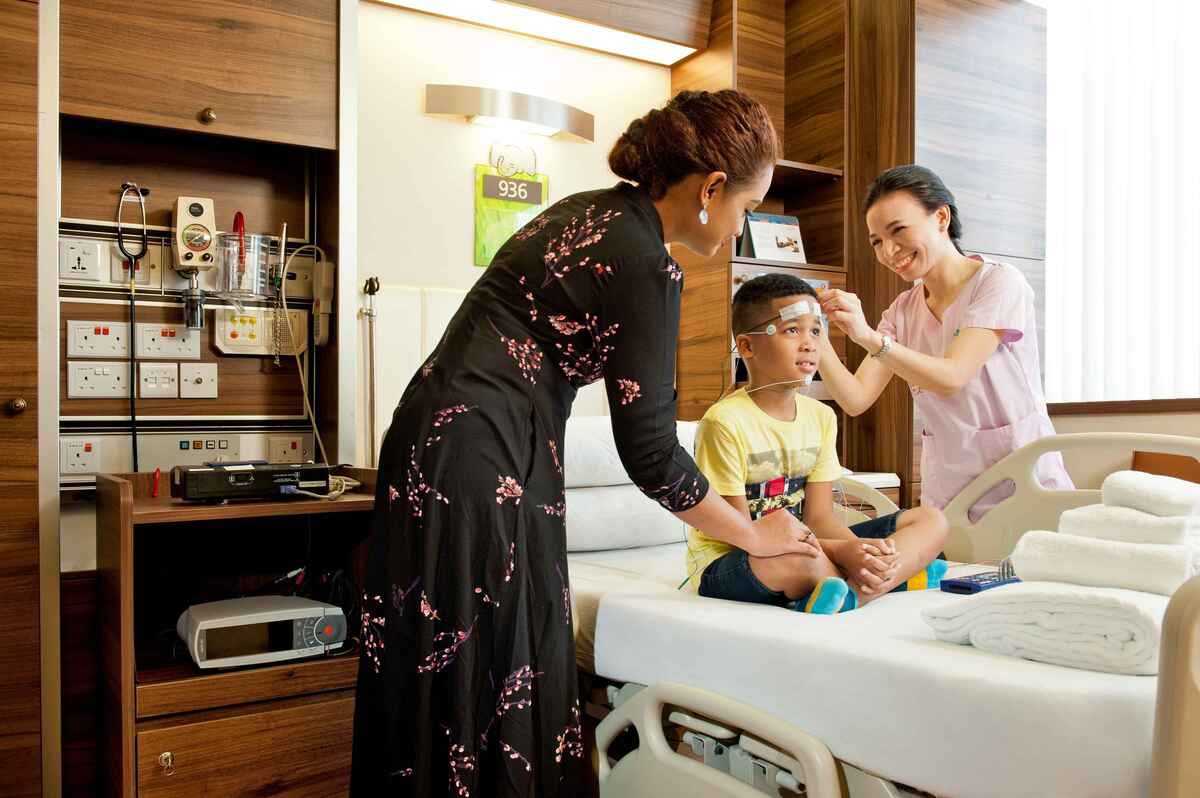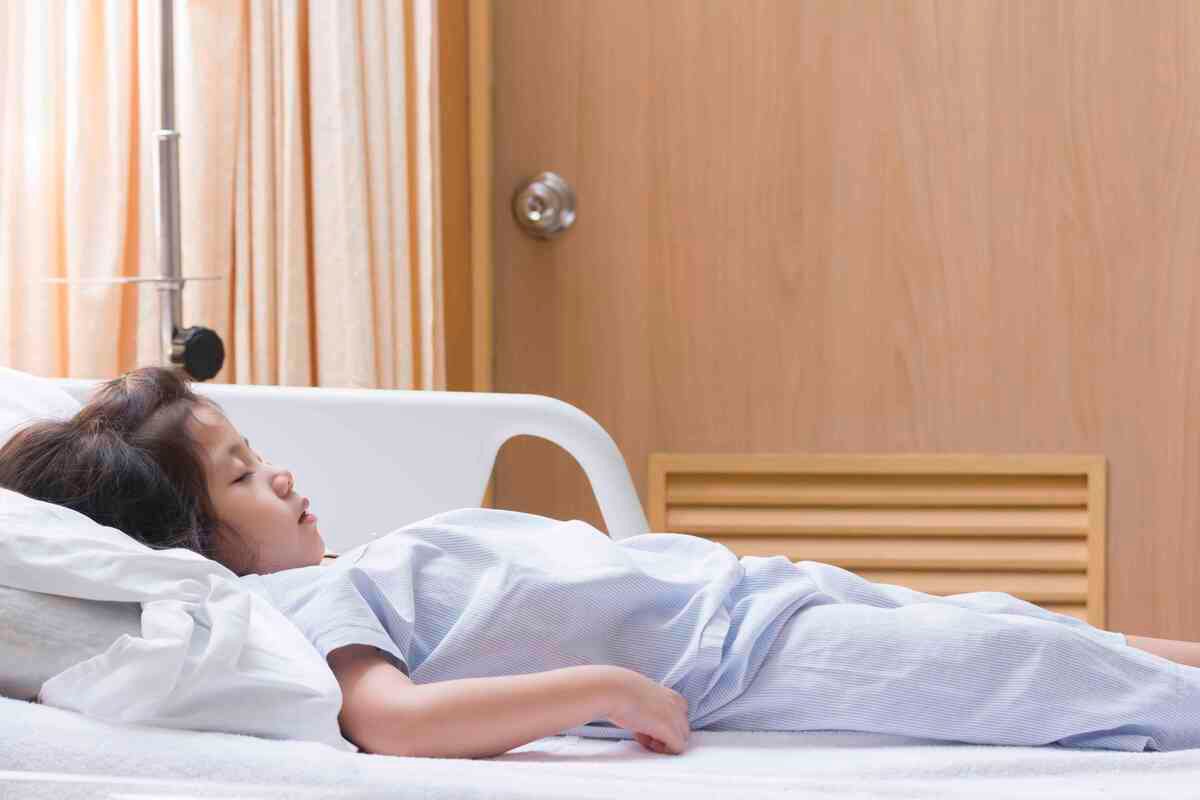The sleep study or polysomnogram (PSG) is a comprehensive test that records your child's sleep pattern. The recording includes measurements of brain activity, eye movements and muscle tone used to identify various sleep stages. The study also records heart rate, breathing patterns, oxygen and carbon dioxide levels, air flow through the mouth and nose, snoring and leg movements to classify various sleep problems.

1. What is a sleep study or a polysomnogram?
2. When is a sleep study necessary?
A sleep study is useful for proper evaluation of:
- possible sleep related breathing disorders e.g. sleep apnea;
- disorders of excessive daytime sleepiness e.g. narcolepsy;
- abnormal movements in sleep e.g. restless legs syndrome;
- unusual paroxysmal events in sleep e.g. sudden uncontrollable outbursts of crying or agitation
An accurate diagnosis is necessary for optimal prescription of treatment plans. A sleep study may also be used to initiate and adjust treatments, such as continuous positive airway pressure therapy or oxygen therapy, after a sleep disorder is diagnosed.
A daytime nap study or mean sleep latency test, that measures how quickly one falls asleep in a quiet environment during the day, is sometimes required to evaluate disorders of excessive daytime sleepiness.
3. What happens during the sleep study?
During sleep testing, the recording and monitoring of various body activities (brain activity, muscle tone, eye movements, breathing through the mouth and nose, snoring, heart rate and leg movements) is achieved by small sensors or discs (electrodes) applied to the head and skin with an adhesive. Flexible elastic belts are placed around the chest and abdomen to measure the breathing effort. The level of oxygen and carbon dioxide in the blood is monitored by a clip on the index finger or toe and a sensor on the chest respectively. Your child's sleep is also videotaped for later review of any abnormalities observed during the study. The sleep technologist will monitor the sleep pattern throughout the night via recordings from the sensors and the video camera viewed remotely from a nearby control room. One parent is allowed to stay with the child for the duration of the study.
4. Is the sleep study uncomfortable or painful?
The sleep study is a non-invasive, painless test. All the devices are designed to be as comfortable as possible. The electrodes may feel strange at first, but most people do not find them uncomfortable or an obstacle to falling asleep. The sleep specialists recognise that your child's sleep may not be exactly like that at home. This usually does not interfere with obtaining the necessary information from the study.

5. What happens after the sleep study?
After the study, the sensors are removed and the patient may leave the sleep centre and return to their usual activities. A sleep specialist will review and interpret the sleep record which is a complex, time-consuming and intensive process. If a sleep disorder is found, treatment recommendations will be made and the doctor will be able to advise on the various treatment options available.
6. What to do for a successful sleep study?
- Prepare your child by telling them what to expect for the sleep study
- Follow your child's usual sleep schedule. Avoid napping if it is not your child's usual sleep behaviour
- Avoid caffeine (coffee, tea, cola, chocolate) on the day of the study
- Wash and dry your child's hair and do not apply hair mousse sprays, oils or gels before the sleep study
- Bring everything that your child needs for a good night's sleep for example their special pillow or blanket
- Show up early as preparation takes time and the aim is to allow your child to sleep at his usual bedtime
- Let the doctor know if your child is taking any prescribed or over-the-counter medication as certain medications may affect sleep and the interpretation of the sleep study
- Do not discontinue any prescription medication without first talking with the doctor
- Reschedule the sleep study if your child is not feeling well as this will affect sleep and the interpretation of the study. Check with the doctor if in doubt
- If your child has special needs, advise the sleep technologist so that they make the necessary arrangements
This article was contributed by Dr Jenny Tang, AIA Preferred Provider, and Consultant Paediatrician with a special interest in Asthma, Lung, Sleep and Allergy. To request an appointment with Dr Jenny Tang, please click here.
References:
- Aurora RN et al; Practice parameters for the respiratory indications for polysomnography in children. SLEEP 2011;34(3):379-388
- Aurora RN et al; Practice parameters for the non-respiratory indications for polysomnography and multiple sleep latency testing for children. SLEEP 2012;35(11):1467-1473
- The AASM Manual for the Scoring of Sleep and Associated Events. Version 2.6 January 10, 2020